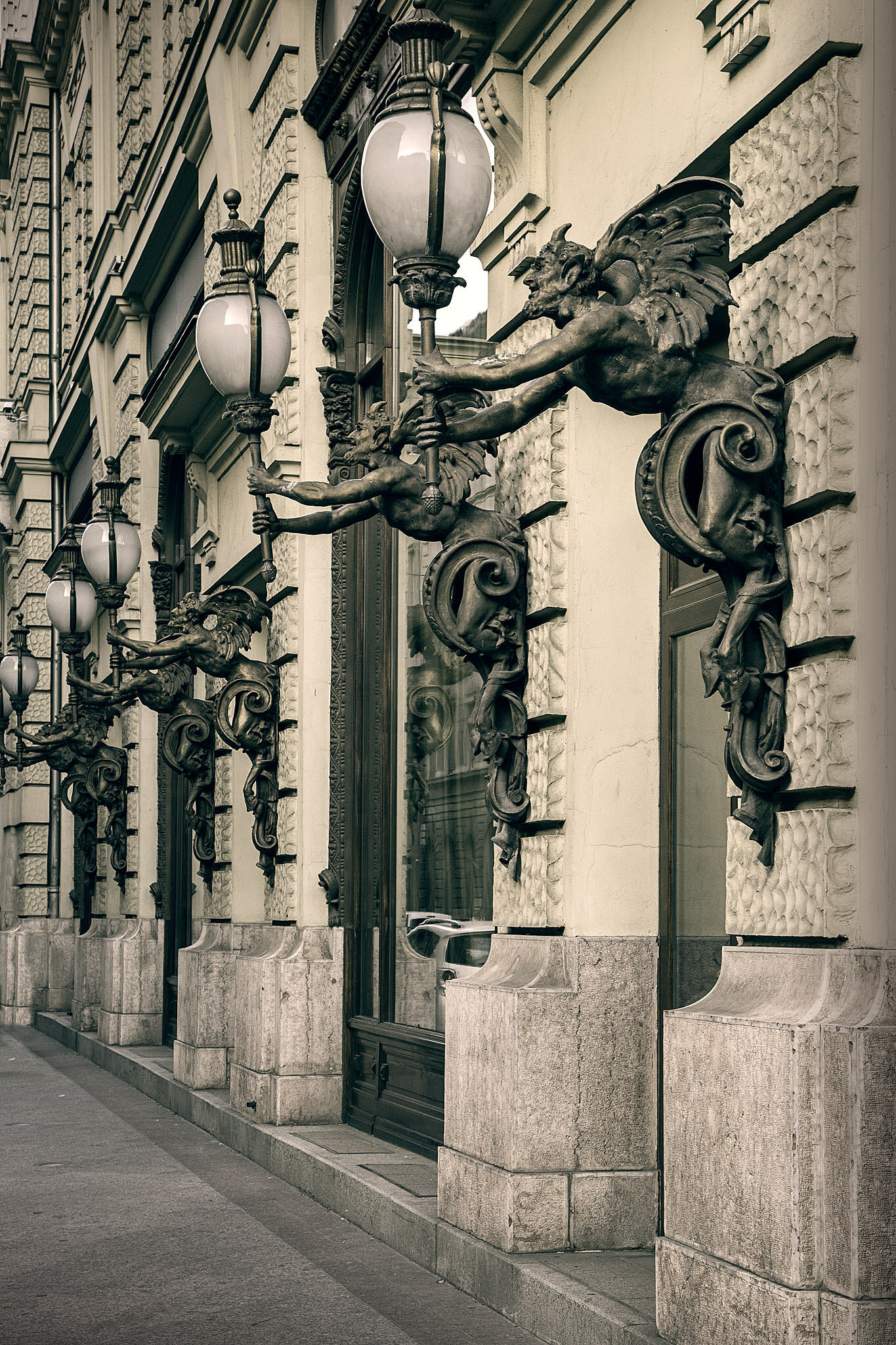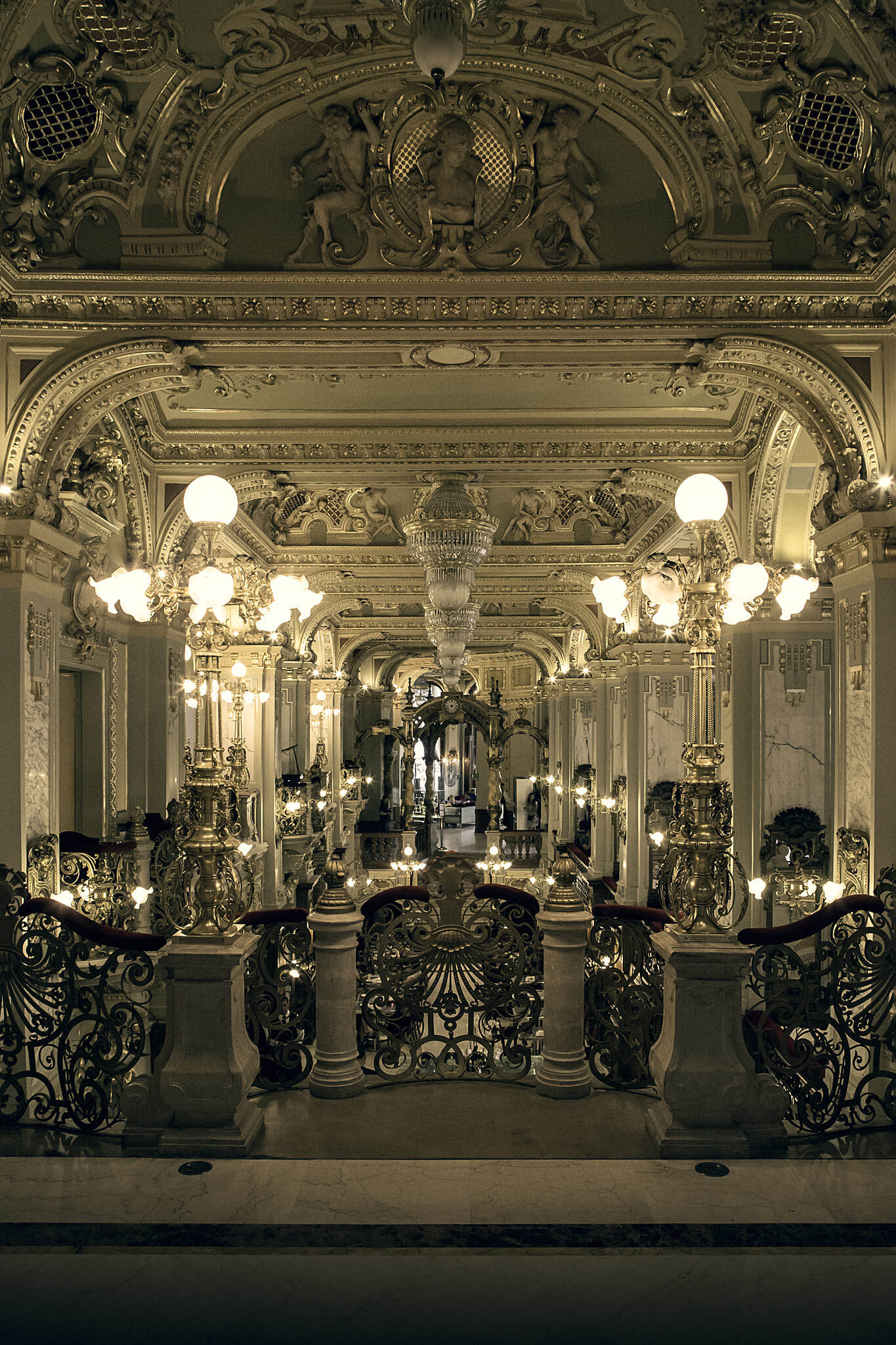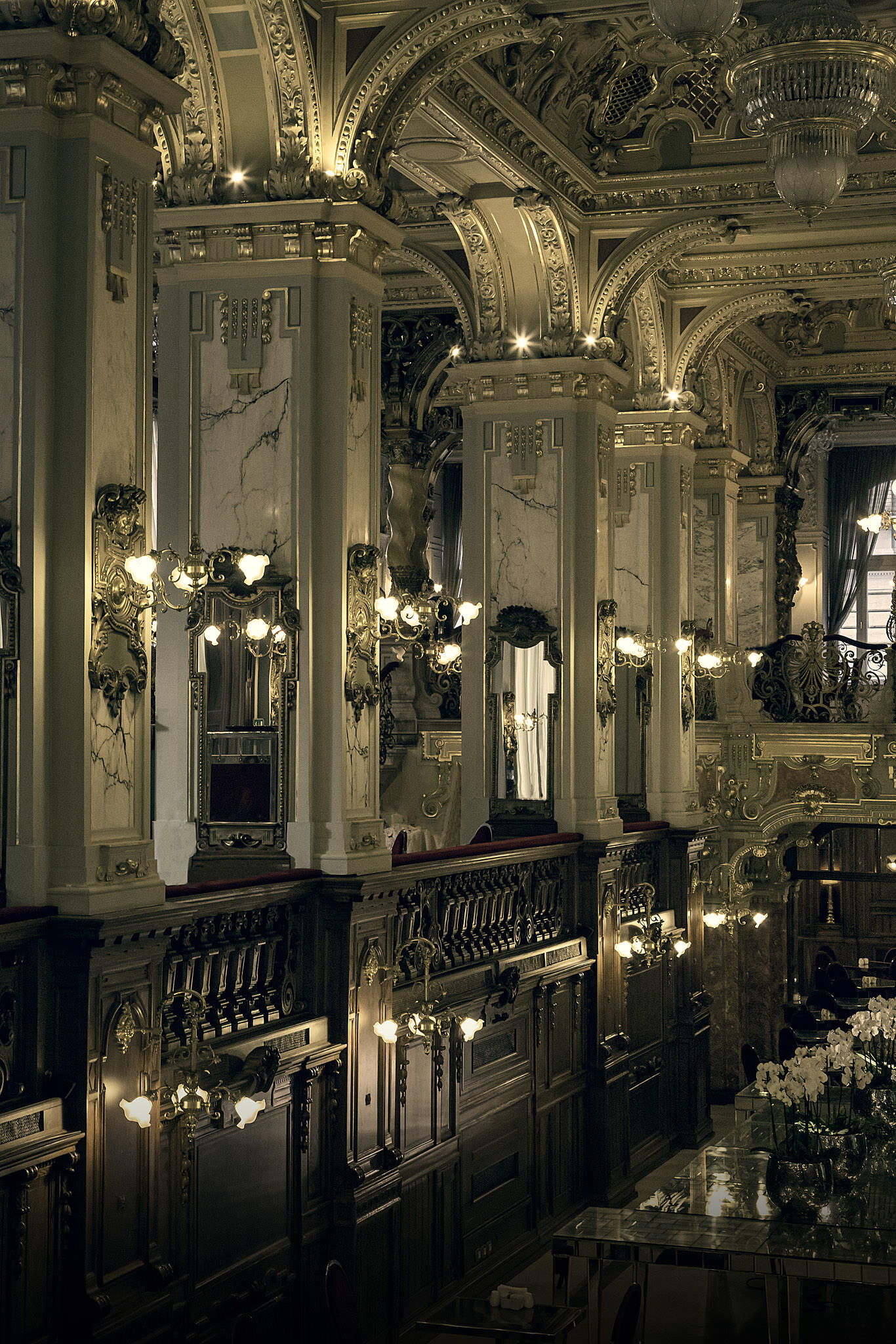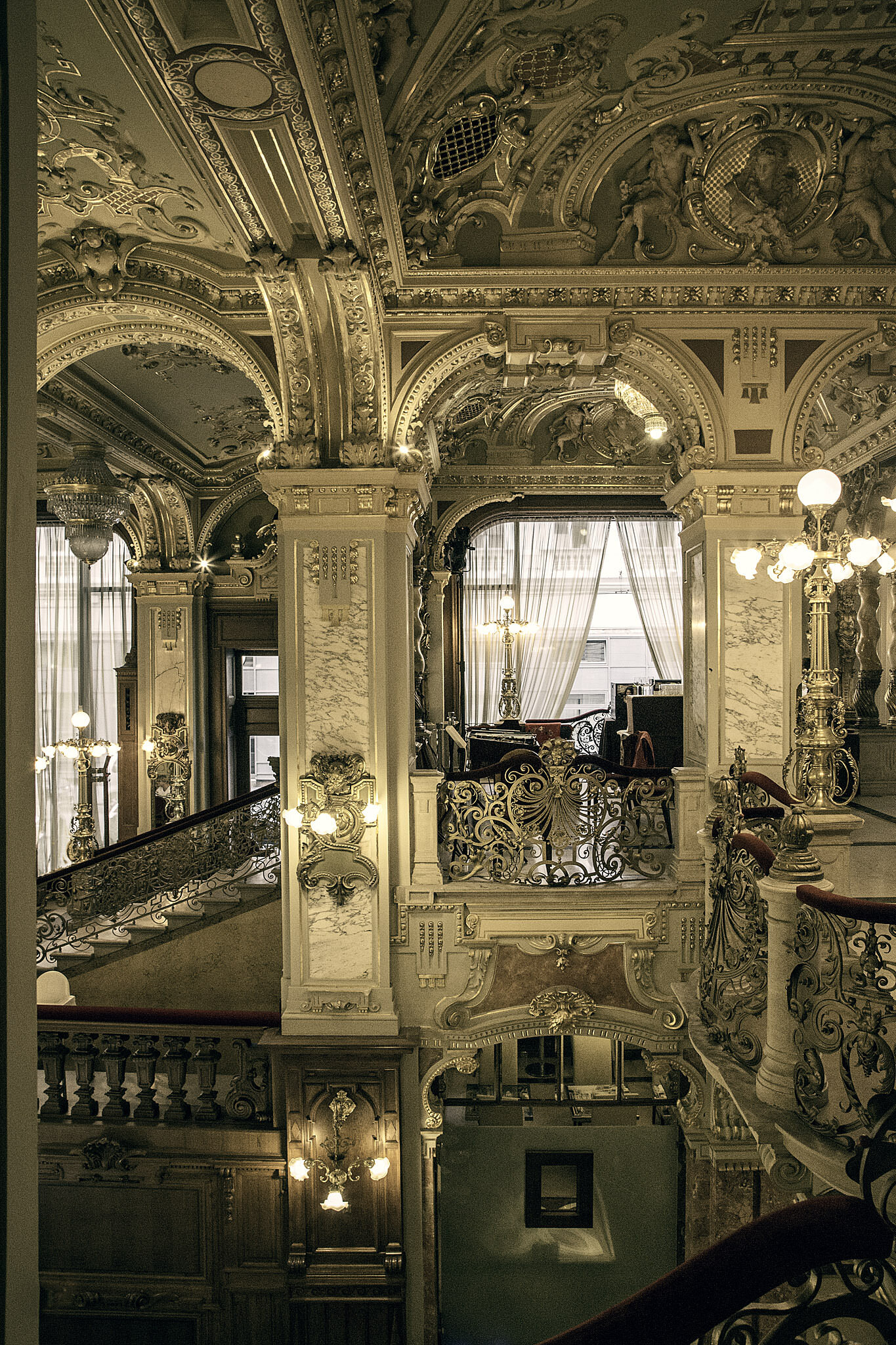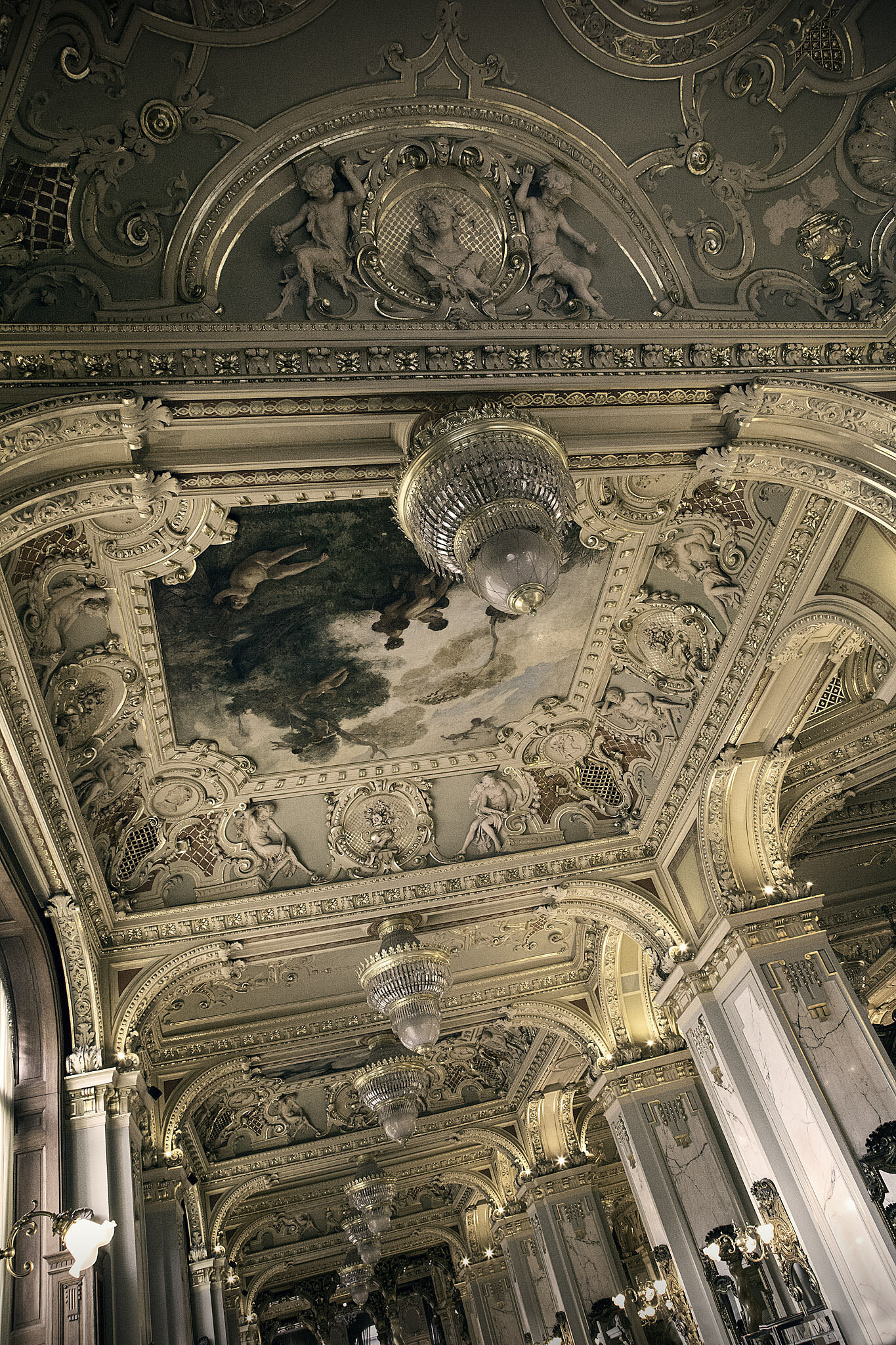New York Cafe, budapest
The tradition of coffee houses in Budapest, is similar to that in Vienna, it is part of the culture. People met their friends there, conducted their business or just read the newspaper. It is thought that there were 400 cafes in Budapest and many would have catered to specific groups of people, so journalists may have frequented one cafe, while bankers used another, etc. One of the most famous Budapest cafes is the New York Palace and Coffee House.
The exterior entrance is guarded by 16 gargoyle type creatures, holding lamps in their hands. They are supposed to represent El Ashmodai, who was an ancient figure of coffee and meditation. Apparently, this is intended to help create an aura of spirituality, and while I’m not quite sure if that works, it does give you no idea of what you will find in the interior.
The building of the New York Coffee house was commissioned by the New York Insurance Company, which is where it took its name from. It was designed in a historic style, which encompassed many styles really, including neo-Renaissance, neo-Classical, neo-Baroque and Art Nouveau. This created a highly ornate building, which is somewhat over the top, yet it’s remarkable beauty is undeniable.
The New York Café opened on the 23rd of October 1894, and was run by a Budapest coffee merchant, named Sandor Steuer. He wanted to create the most beautiful café and he succeeded. The interior is lavishly decorated, there is marble, bronze, silk and velvet everywhere. The marble columns lead the eye to the gilded ceiling, which was covered in frescoes and panelled paintings, created by Gusztav Mannheimer. The room was lit by Venetian chandeliers. The amazing interior result, resembles a palace more than a coffee house.
The New York Café was severely damaged during the second World War, in the months that followed, potatoes were sold from its shattered windows. The communist regime was in power by 1949, and the New York Café with its opulence and splendour, represented an obvious symbol of capitalism which could not be allowed to operate as it had before. Its name was changed to Hungaria and it continued to function, but as a shadow of its former self. By 1990, it was run down and in need of restoration. It was purchased by the Italian Boscolo Group, who restored and refurbished it. It was reopened in 2006 as The New York Café, and has become one of Budapest’s top tourist attractions.

